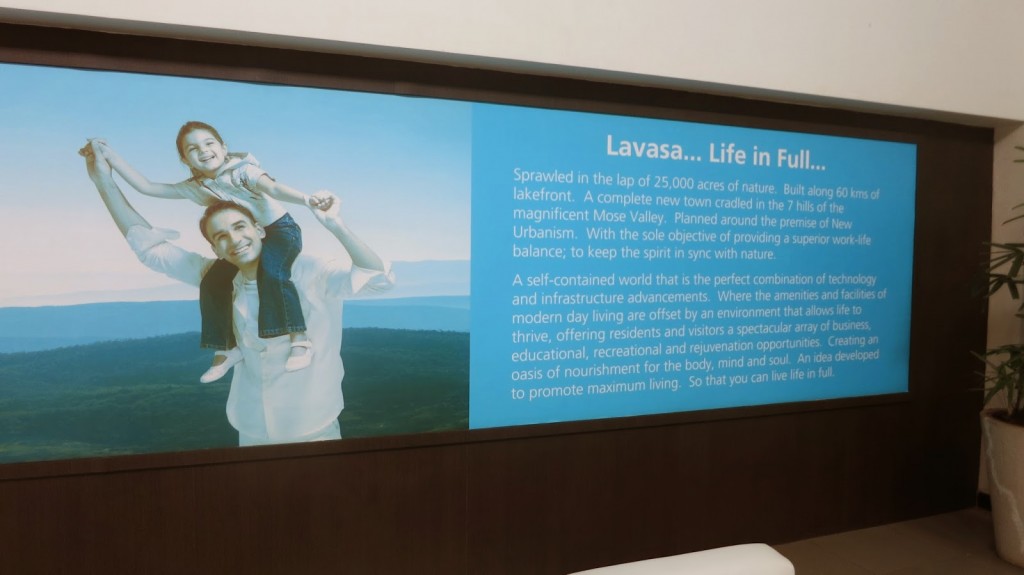 |
| One of the utopian type advertising posters in Lavasa, branding courtesy of Landor from what I read. |
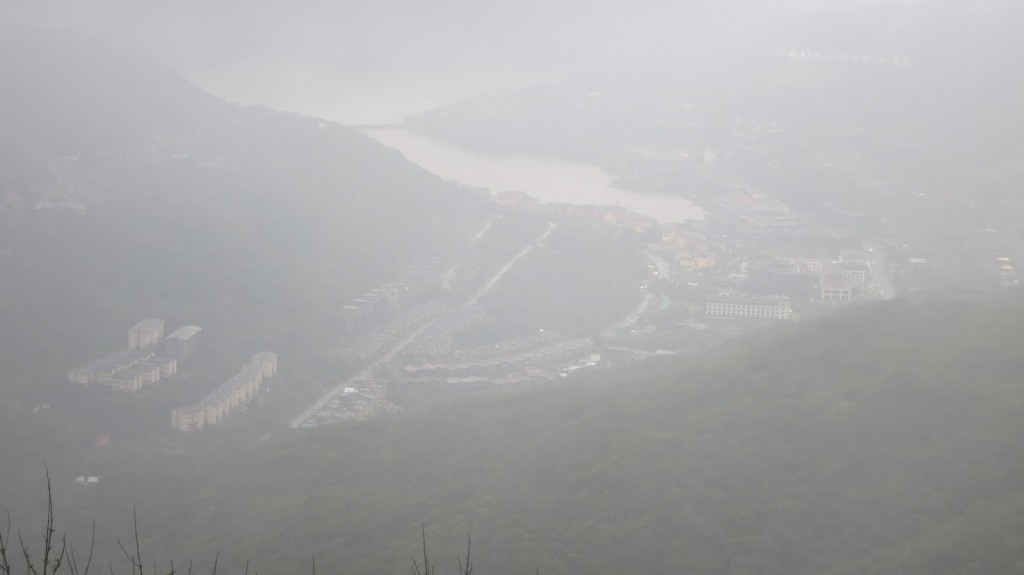 |
| The city view in the valley from the entrance, I thought it was a just a bad day until I was told half the year was like this. |
I could barely see the town at the bottom of the valley for the clouds and mist, built around a lake. They had also built chalets a little higher from the lake on the hill sides. A few other buildings seemed to be still in construction. I was told people visited for the weekend like they did the other Hill Stations, though was told this was also meant to be a stand alone city and they intended to attract education institutions and then students, and then people to purchase all these properties. I asked how students who don’t typically have that much cash would travel to this empty ghost town given there wasn’t any public transport. It was definitely far from the train lines, and a bus would take hours from the nearest large city.
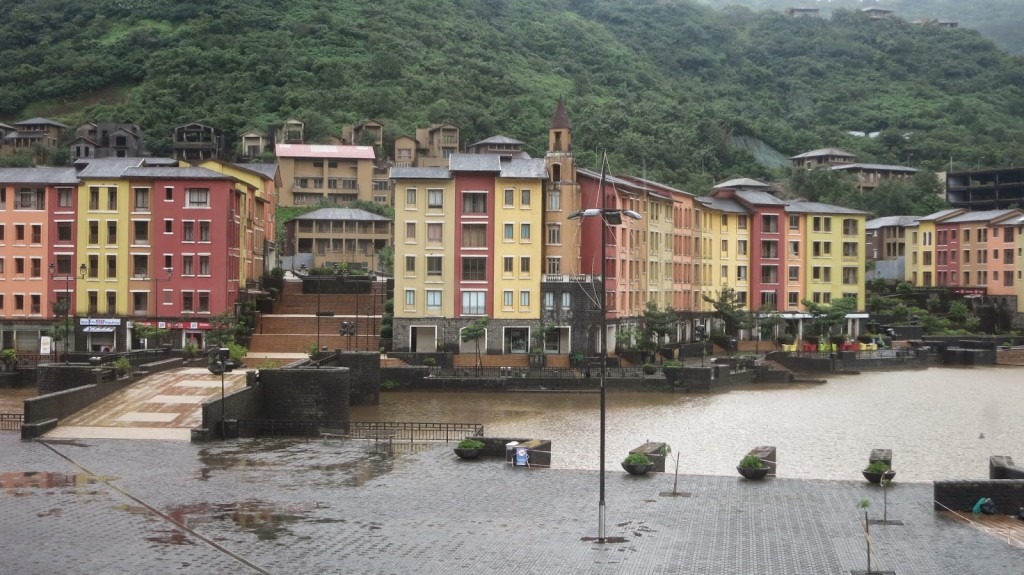 |
| The mostly empty houses along the lake |
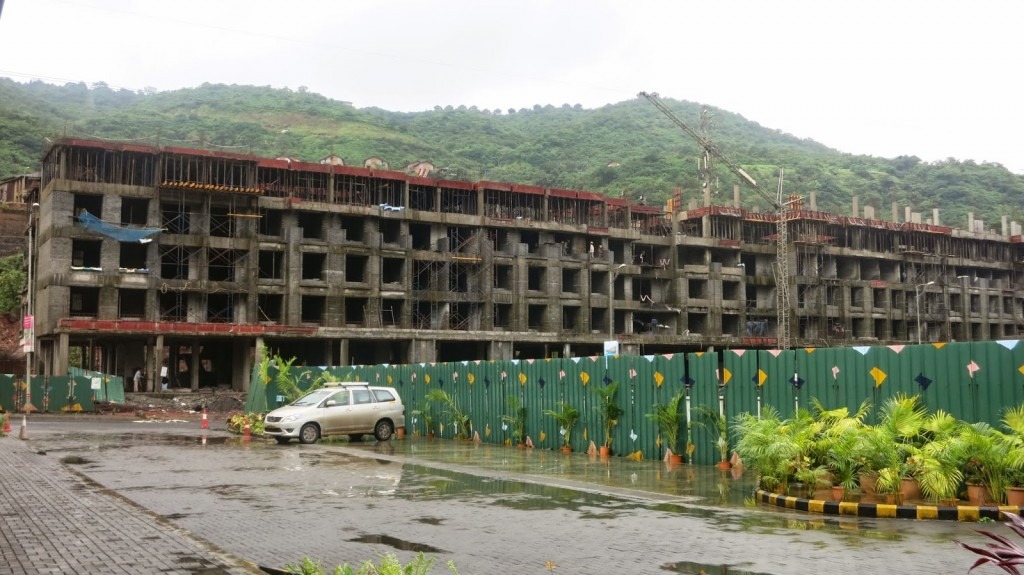 |
| And more houses and structures being built everywhere. |
We drove down to the conference and events centre where I found out Accor Hotels was managing this whole venture, their logo was around the deserted exhibition centre, and their brands were present elsewhere, such as the Hotel Mercure we had lunch at.
The whole place was being drenched in downpours every few minutes while we were there. One of the employees told us this particular valley received the highest rainfall of India and it rained for 5-6 months non stop every year, often more than that.
The exhibition centre looked both brand new and overused. I supposed the wear and tear of the rain might be to blame for the sorry state of the chairs in the conference rooms.
I asked how many people actually lived in the hundreds of apartments I could see along the lake, and was told it was perhaps two hundred. I spotted less than a dozen occupied apartments from clothes drying, furniture, or curtains. I still suspect most of those are the builders who I could see working on new structures nearby. A parking lot and more apartments, apparently.
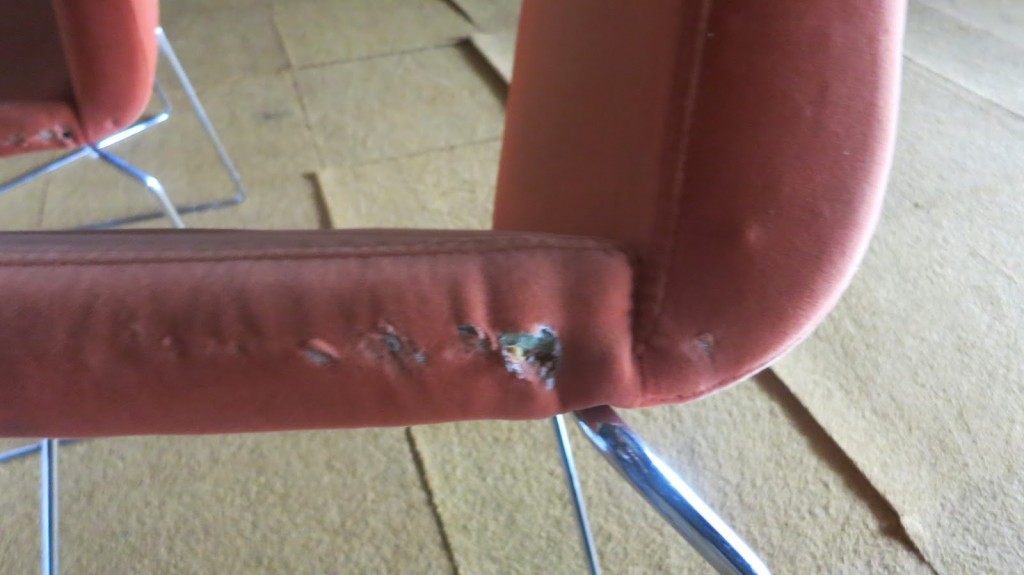 |
| Close up on the Lavasa International Conference Centre. |
Before leaving, we went to the visitor’s centre where we admired posters touting Lavasa as the free eco city of the future. Nothing looked particularly eco or sustainable as far as I could see. They gave us a video presentation of the plans for the whole valley, we were told this was the first of seven future towns in the complex of Lavasa through a well crafted 3D animation flying over the valley, each new town would be specialised in a branch of industry, and that this was the first city in India entirely created, developed, and managed by a corporation.
I felt we were all listening to a talk about the beauty of the emperor’s new clothes.
As we left under more rain and grey, I couldn’t help but think of several blog posts I’d seen with photos of similar ghost towns in China, and that in the real world, building it doesn’t mean they’ll come – at all.


